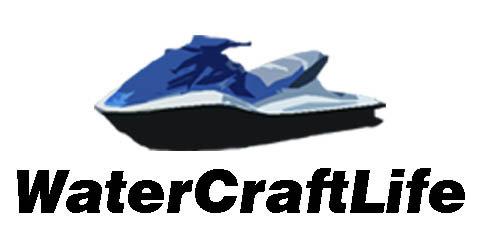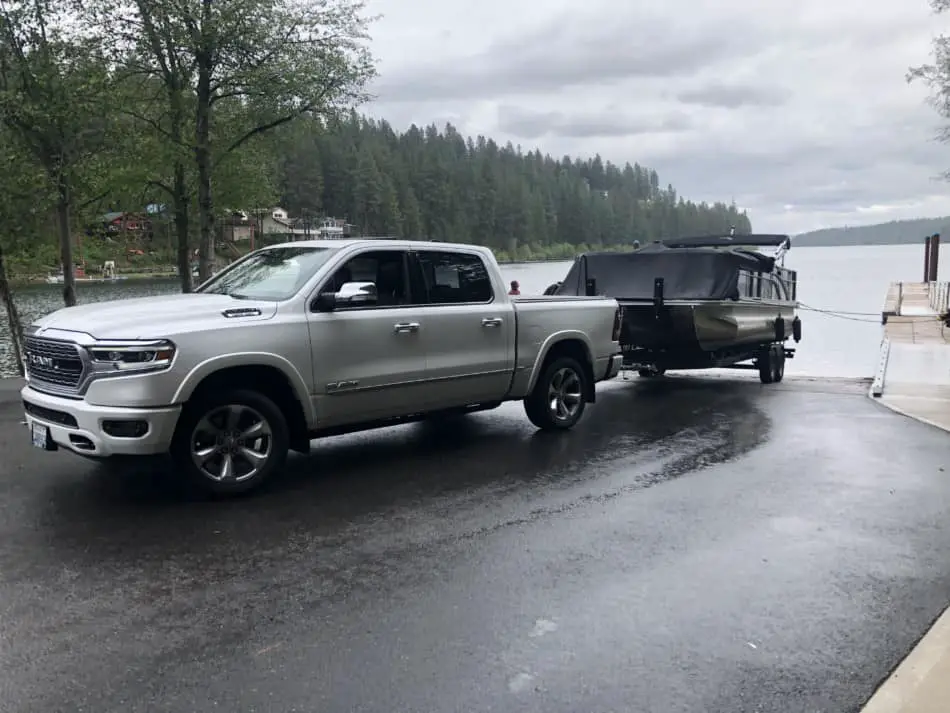If you love the great outdoors and the water, there’s a good chance that you’ve invested in a boat. Unfortunately, a boat isn’t a whole lot of good unless you have a trailer to go with it and a way to transport it. Because of how heavy many boats are, people often wonder if they can and should use a weight distribution hitch with boat trailers.
When it comes to using a weight distribution hitch with a boat trailer, it’s both allowed and recommended. Anytime that you’re hauling a boat that weighs more than 2,500 pounds, it’s good to have a weight distribution hitch. However, no matter how heavy your boat trailer is, you can use a weight distribution hitch when towing it.
If you still have questions about using a weight distribution hitch with a boat trailer, don’t worry because you’re not alone. Towing trailers and RVs is hardly ever a black and white situation, and there are many other questions that we’ll answer in this article.
How do You Distribute Weight on a Boat Trailer?
When it comes to towing your boat trailer, the last thing you want to do is overthink the situation. The same rules that apply to towing an RV or recreational trailer also apply to boat trailers. If the weight of the boat and trailer combined is more than half the weight of the towing vehicle, you should have a weight distribution hitch.
While distributing weight with a boat trailer is slightly different than with other rigs, the same rules apply. You should have no more than 10 to 15% of the total weight of the boat trailer on the tongue. This is referred to as tongue weight, which is the weight that will sit directly on top of the trailer hitch. In other words, you never want more than 10 to 15% of the boat trailer weight sitting on top of the hitch.
The best way to ensure that you have the correct amount of weight on the trailer hitch is by using a weight distribution hitch. Weight distribution hitches evenly disperse the weight of boat trailers along the entire body of the towing vehicle. It will make so that roughly 10 to 15% of the boat trailer’s weight is at the tongue, and that the rest of the weight is evenly distributed on the front and rear axles of the towing vehicle.
At What Trailer Weight do You Need a Weight Distribution Hitch?
Just as with RVs and other trailers, any time the weight of your boat trailer is more than half the weight of the towing vehicle, you should have a weight distribution hitch. Bear in mind, however, that you’ll need to factor the weight of the boat in with the trailer weight and use the combined total.
For example, let’s say that your towing vehicle weighs 6,000 pounds. Now, let’s say that your boat trailer weighs 2,000 pounds and your boat weighs 3,000 pounds, for a total weight of 5,000 pounds. Because 5,000 pounds is more than 3,000 pounds – half the weight of the 6,000-pound towing vehicle – you should utilize a weight distribution hitch.
Weight Distribution Hitch Formula
Here’s an easy step-by-step formula to keep in mind when deciding whether or not you need a weight distribution hitch.
- Add up the combined weight of your boat and trailer.
- Check your owner’s manual to determine the weight of your towing vehicle.
- Divide the weight of your towing vehicle by 2.
- If the combined weight in step 1 is more than the number in step 3, you should use a weight distribution hitch.
Other Times to Use a Weight Distribution Hitch With a Boat Trailer
Even if the combined weight of the boat and trailer isn’t half the weight of the towing vehicle, there are times when you should still use a weight distribution hitch. Here are a few of those times.
- Your boat trailer is more than 24 feet long.
- You’re towing your boat trailer with a towing vehicle less than a half-ton in size.
- You feel at all uncomfortable with the sway or sag of your boat trailer while you’re towing it.
How do You Put Tongue Weight on a Boat Trailer?
In most cases, people use a rule of thumb that the tongue weight of a vehicle is 10 to 15% of the total weight. So, if you know the total weight of the trailer, you simply divide that number by 10 for the tongue weight. However, boat trailers are slightly different because of how they’re set up. Here’s how the process works.
- Start by adding up the combined weight of different components of the boat and trailer.
| Item | Weight |
| Boat Trailer | 2,000 pounds |
| Boat with Fuel | 2,500 pounds |
| Boat Motor | 500 pounds |
| Total Weight of Boat, Trailer, and Accessories | 5,000 pounds |
- If you have a single-axle trailer, multiply the total weight by 6%.
- If you have a double-axle trailer, multiply the total weight by 5%.
- Next, use a tongue scale to weigh the tongue of the boat at the ball coupler.
- If the weight of the tongue isn’t equal to that of the formula above, you will either need to add or remove weight from the tongue area.
- As long as the weight is within 5 to 7% of the range above, you’re good to go.
- If you need to adjust the weight of the trailer tongue weight, move the axle forward or backward as needed.
- Moving the axle forward will decrease the tongue weight by 10 to 15 pounds for every inch, while moving the axle backward will increase the tongue weight by 10 to 15 pounds per inch.
In the scenario in the table above, the tongue weight for a single-axle trailer should be 300 pounds, and 250 pounds for a double-axle trailer.
How do You Stop a Boat Trailer From Swaying?
A boat trailer that sways when you’re towing it is one of the most frightening experiences you can have as a boat owner. Unfortunately, boat trailer sway is a common problem because of the size of the boat and trailer. However, there are a few things you can do to minimize the swaying effect.
Use a Weight Distribution Hitch
If you’re struggling with or worried about boat trailer sway, the best thing you can do is tow with a weight distribution hitch. This will ensure that the correct amount of weight is on the your trailer hitch as well as on the rest of your towing vehicle.
Move Items Around in Your Boat Trailer
You shouldn’t have more than 10% of your boat and trailer weight on the tongue of the trailer. You may have to move items around inside your boat to redistribute weight. You should also never have less than 60% of the total weight of your cargo on the front of your trailer.
Don’t Overload Your Trailer or Tow Vehicle
Make sure you know the towing capacity of your vehicle and the GVW of your trailer and never exceed those numbers. If that means upgrading to a new vehicle, installing a heavy-duty tow package, or removing items from your boat, then so be it.
Slow Down
The faster you go, the more likely you are to experience trailer sway. To ensure boat trailer sway doesn’t happen, you shouldn’t go faster than 50 or 55 mph on the open highway.
Check Your Tire Pressure
If you have some tires on either your trailer or towing vehicle that are over or under-inflated, you’re more likely to experience swaying. Make sure to check the recommended tire pressure and the actual tire pressure of both vehicles and adjust accordingly.
Install Sway Bars
If a weight distribution hitch isn’t doing the trick, you can always install sway bars. Sway bars don’t help with weight distribution, but they do help with swaying. Sway bars, when combined with a weight distribution hitch, is the best way to prevent trailer sway.

